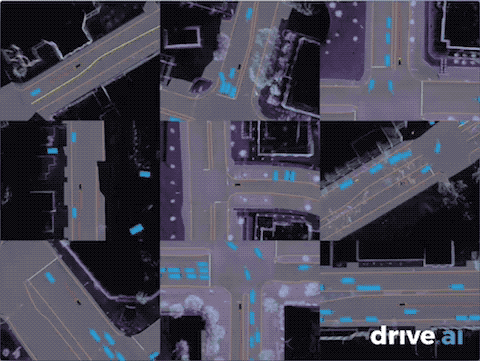The bedroom community of Frisco, Texas might seem like an unusual place to find a self-driving vehicle. But here in this city of nearly 175,000 people, there are seven.
And as of Monday, they’re available for the public to use within a specific sector of the city that has a concentration of retail, entertainment venues and office space.
Drive.ai, an autonomous vehicle startup, launched the self-driving on-demand service Monday that will cover a two-mile route. The service will be operated in conjunction with Frisco TMA, a public-private partnership focused on “last-mile” transportation options. People within this geographic zone can hail a ride using a smartphone app.
Even in their small numbers, the modified Nissan NV200s will be hard to miss. The self-driving vehicles are painted a bright orange with two swooping blue lines — with the words “self-driving vehicle” and “Drive.ai” set in white.
The vehicles, which have been given distinctly human names like Anna, Emma, Bob, Fred and Carl, are equipped with LED screens on the hood and rear, and above the front tires, which will display messages as well as the vehicle’s name to pedestrians.
This isn’t a business enterprise just yet. The service, which is considered a pilot project, is free and will be operational for six months. The program will begin with fixed pick-up and drop-off locations around HALL Park and The Star and then will expand into Frisco Station.
Conway Chen, Drive.ai’s vice president of business strategy, emphasized to TechCrunch that this is designed as an on-demand service, and not a shuttle. When the vehicles are not being used they won’t just keep circling the route, which could cause more traffic congestion, Chen said. Instead they will be able to park along the route.
In the weeks since announcing plans to launch in Frisco, Drive.ai has been tweaking the service, its schedule as well as racking up miles on the road and in simulation. The company said it has logged 1 million simulated miles on its Frisco route. In its simulation, Drive.ai replicates scenarios — taken from its driving logs — the vehicles encountered while driving the route, as well as creating its own scenarios.
As Drive.ai explains in a post on Medium: “It’s like a high tech version of SimCity, where we design the world, and can then replay events and modify their components to explore how our technology responds in unique scenarios. This is a good place to start for the more common things that people do on the roads: navigating tricky intersections, right-of-way decisions, and observing the behaviors of cyclists and pedestrians.”

Drive.ai simulation.
The service, which will operate weekdays from 10 a.m. to 7 p.m., will initially have a safety driver behind the wheel. That person will eventually move to a passenger seat and take on a chaperone role, whose primary responsibility will be to answer questions and make riders comfortable. At some point, Drive.ai will remove the employee from the vehicle completely.
The company also has a remote monitoring feature, called “telechoice,” that allows a human operator to see everything in real-time that the self-driving vehicle can see using HD cameras.
Telechoice is not like the full remote control teleoperation that startup Phantom Auto provides. The telechoice operator can control basic functions like braking, but it cannot take full control of the vehicle or make it accelerate. With Drive.ai’s feature, if “Bob” the self-driving vehicle struggles with a certain situation on the road, the telechoice operator can help it make the right decision.